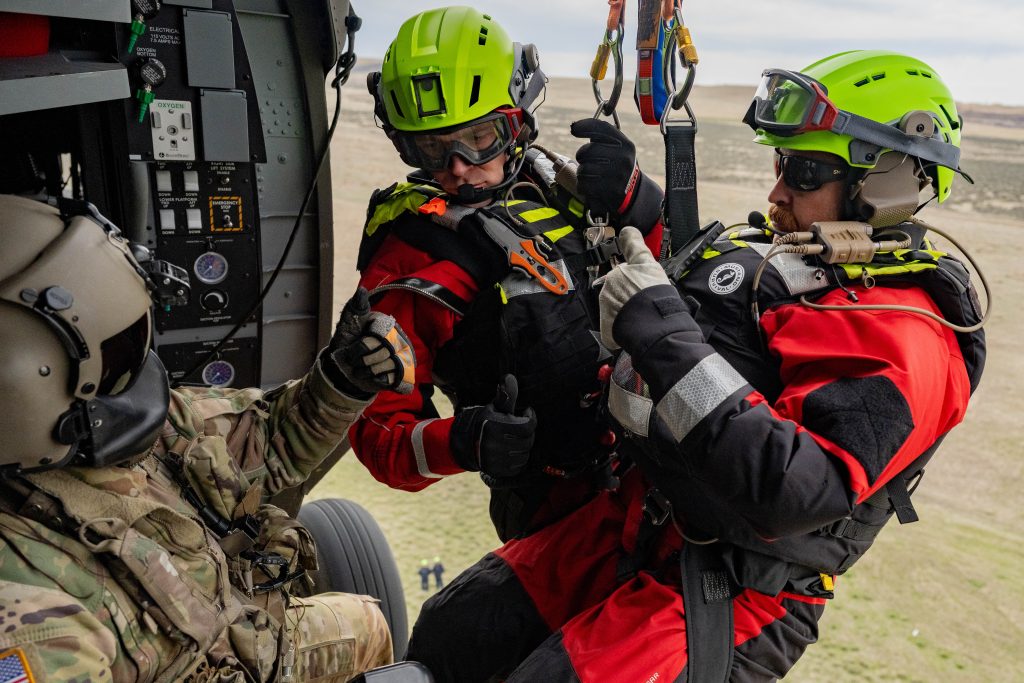State Aviation Group trains with Boise Fire Department

HH-60M Black Hawk helicopter crews trained with the Boise Fire Department‘s technical rescue team March 27 and 28 near Gowen Field. The training helped qualify Boise firefighters for conducting hoist operations in conjunction with Idaho Army National Guard air crews when called upon by state or local agencies to assist with search and rescue efforts. The two organizations work hand in hand frequently, combining skills and expertise to enhance the effectiveness of both organizations when responding to emergencies.
This is the first opportunity Boise firefighters have had to train on the Army’s new HH-60M model Black Hawk helicopter. The HH-60M is configured for search and rescue operations. New features include improved cabin design and integrated medical capabilities including on-board oxygen, medical suction, electrical outlets that can be used to power specialized medical equipment, and an environmental control system that can be used to help stabilize patients suffering from heat or cold injuries.
“We are very fortunate here in Idaho that we have a battalion of lift asset helicopters in the Black Hawks and the Lakotas,” said Boise Fire Department Capt. Mike Barbero. “At Boise Fire, we have technician-level water rescue personnel. By joining those two skill sets together, it’s better for everybody.”
In 2017, leaders from the Idaho Army National Guard and the Boise Fire Department formed a partnership and train together twice a year to ensure both agencies are certified for future operations together. About 15 firefighters on the department maintain technical and water rescue certifications.
Chief Warrant Officer 3 Theron Cameron, an instructor-pilot with 1-183rd Aviation Battalion, said the synergistic relationship between the two organizations increases readiness and capabilities that can be drawn upon when Idahoans need it the most.
“It’s cool for us because we get to work with these guys who train for this all the time, and we get to put them in situations where they are really able to use that training to help the community,” said Cameron. “I’ve been deployed to combat; I’ve done a lot of different things, but definitely the most rewarding thing is being able to go out and help people right here in your community.”
 Official Government Website
Official Government Website